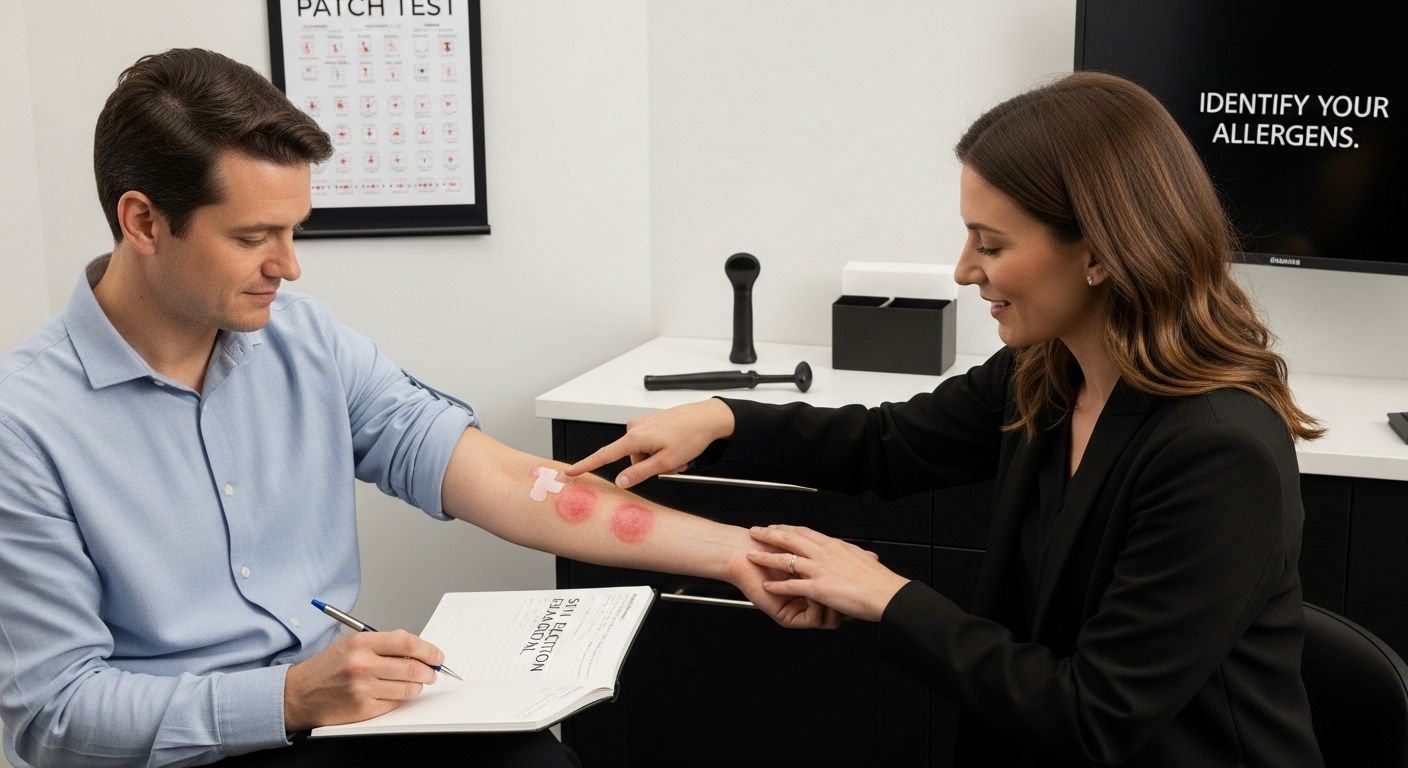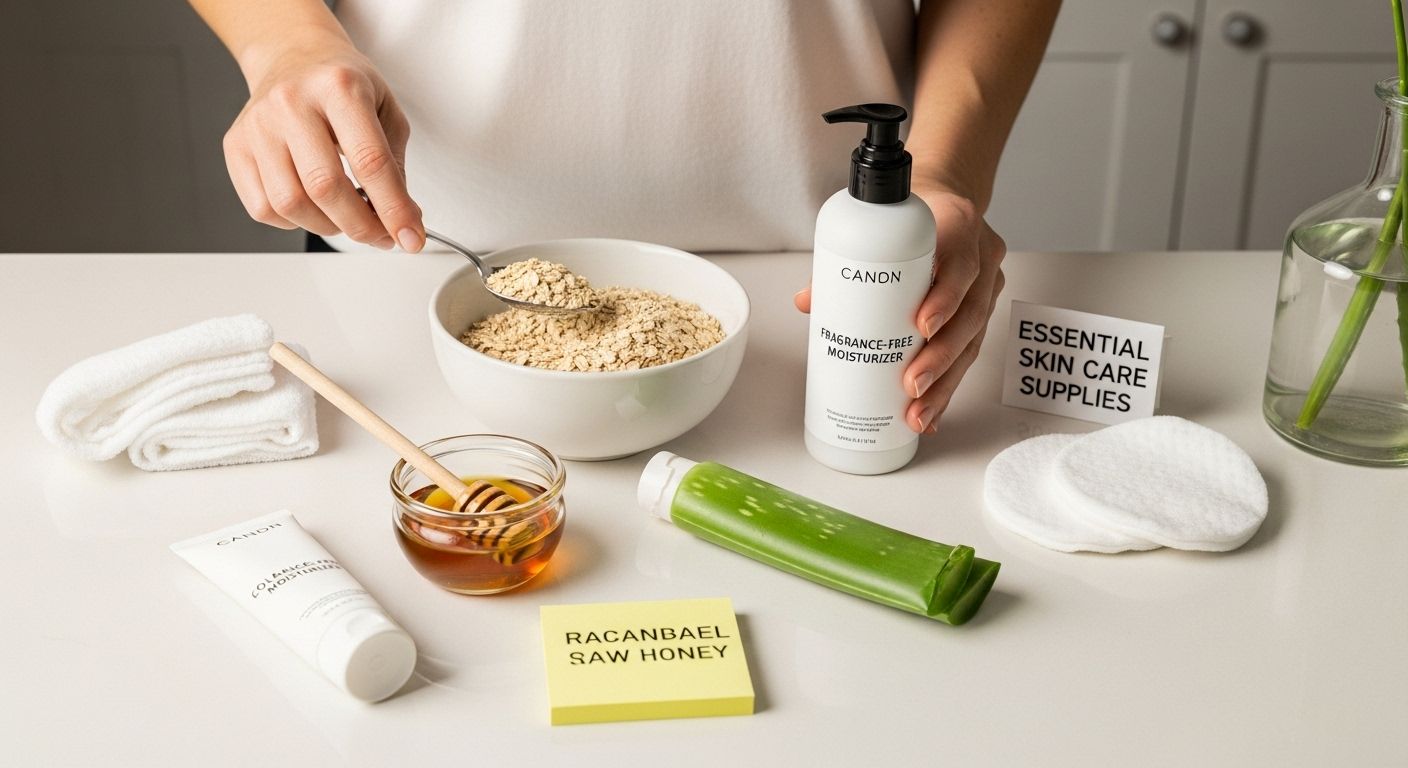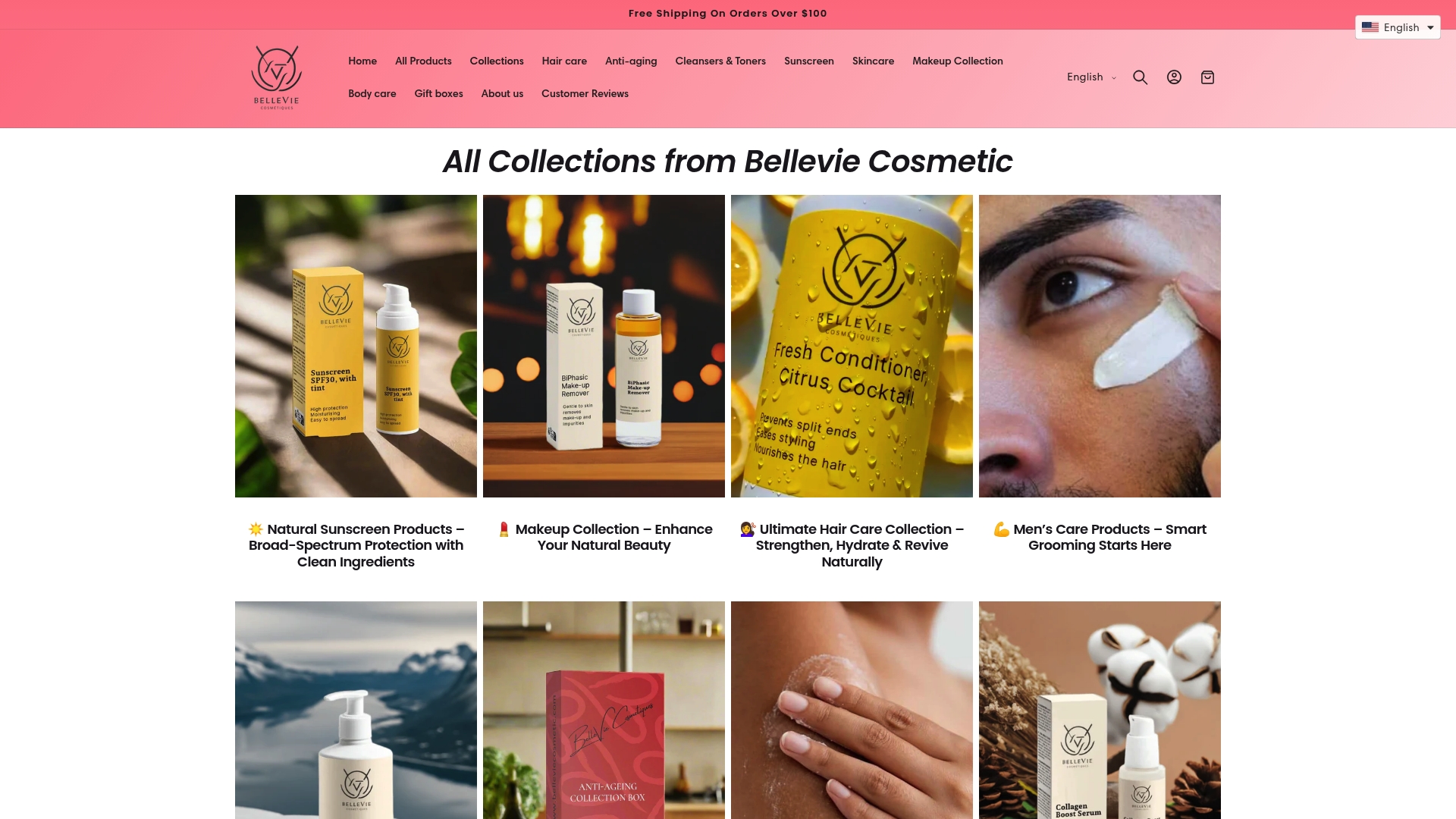
Figuring out what actually triggers your skin allergies can feel like solving a mystery that just keeps changing the clues. You might be surprised to hear that professional patch testing can reveal hidden sensitivities to metals, fragrances, and chemicals found in common products. Most people focus on the obvious culprits like new detergents or food, but the real breakthroughs come from pinpointing the patterns in subtle, everyday exposures you never thought mattered.
Table of Contents
- Step 1: Identify Your Allergens And Triggers
- Step 2: Gather Essential Skin Care Supplies
- Step 3: Apply Natural Remedies For Relief
- Step 4: Monitor And Record Skin Reactions
- Step 5: Adapt Your Routine For Long-Term Care
Quick Summary
| Key Point | Explanation |
|---|---|
| 1. Identify allergens systematically | Keep a detailed journal to track skin reactions and potential triggers, allowing for informed decision-making on triggers and products. |
| 2. Gather hypoallergenic skin care supplies | Select fragrance-free and non-comedogenic products to minimize irritation and support skin healing. |
| 3. Use natural remedies for immediate relief | Apply cold compresses and soothing ingredients like aloe vera or colloidal oatmeal to reduce inflammation and discomfort. |
| 4. Monitor and document reactions comprehensively | Maintain a journal detailing reactions, treatments, and environmental factors to identify patterns in skin responses. |
| 5. Adapt your routine for lasting care | Implement dietary changes and a minimalist skincare routine to promote long-term wellness and skin resilience. |
Step 1: Identify Your Allergens and Triggers
Understanding your specific skin allergy triggers is the critical first step in managing and treating skin reactions effectively. Identifying these triggers allows you to develop a strategic approach to prevention and treatment, minimizing future allergic responses and protecting your skin’s health.
Allergy identification requires careful observation and documentation of your body’s reactions. Start by maintaining a detailed skin reaction journal where you record every instance of skin irritation, noting potential environmental factors, food consumption, skincare products used, and physical symptoms. This systematic tracking helps establish patterns and pinpoint specific substances causing your allergic responses.
Consult a dermatologist or allergist who can perform specialized testing to determine your precise allergens. Professional tests like patch testing and skin prick tests can reveal sensitivities to common irritants such as nickel, fragrances, latex, certain metals, and chemical compounds found in everyday products. These professional evaluations provide scientific insights that personal tracking cannot, offering a comprehensive understanding of your skin’s unique sensitivities.
Environmental and lifestyle factors play significant roles in triggering skin allergies. Pay close attention to potential sources like cleaning products, cosmetics, clothing materials, pet dander, seasonal pollens, and dietary ingredients. Some individuals might discover their skin reacts to specific laundry detergents, while others might experience reactions from synthetic fabric fibers or particular food groups.
Consider exploring our guide on sensitive skin care to help you navigate potential product-related triggers. By systematically eliminating and reintroducing potential allergens, you can create a personalized understanding of what affects your skin.
Successful trigger identification involves patience and meticulous documentation. Your goal is to create a comprehensive profile of substances that cause adverse skin reactions, enabling you to make informed decisions about your skincare routine, product selections, and lifestyle choices. Remember, everyone’s skin is unique, and what triggers an allergic response in one person might be completely harmless to another.
Key verification signs that you’ve successfully completed this step include:
- A detailed journal documenting specific skin reactions
- Professional medical testing results
- A clear list of identified potential allergens
- Reduced frequency of skin allergic responses after implementing avoidance strategies
Step 2: Gather Essential Skin Care Supplies
Gathering the right skin care supplies is crucial in managing and treating skin allergies effectively. This step involves carefully selecting products and natural remedies that will soothe, heal, and prevent further allergic reactions while supporting your skin’s overall health and recovery.
Start by creating a hypoallergenic toolkit designed specifically for sensitive skin. Fragrance-free and non-comedogenic products are essential, as they minimize potential irritation. Look for gentle cleansers, moisturizers, and treatments that contain soothing ingredients like aloe vera, chamomile, and calendula. These natural components help calm inflammation and reduce allergic skin responses without introducing additional chemical triggers.
Your core skin care kit should include several key items: a mild, soap-free cleanser, a fragrance-free moisturizer, a barrier repair cream, and non-irritating sunscreen. Choose products with minimal ingredients and avoid common allergens like alcohol, synthetic fragrances, and harsh preservatives. For individuals with particularly sensitive skin, consider exploring our body care routine for healthy skin to find suitable, gentle options.
Natural remedies can complement your skin care toolkit. Stock up on ingredients like colloidal oatmeal, which provides incredible soothing properties for irritated skin. Pure, cold-pressed coconut oil offers natural antimicrobial and anti-inflammatory benefits. Raw honey can be an excellent addition, providing natural healing properties that help reduce skin inflammation and support recovery.
Prepare additional supportive materials such as soft, hypoallergenic cotton pads, clean towels, and disposable gloves to prevent cross-contamination when treating skin allergies. A digital thermometer can help monitor any potential allergic reactions, and a comprehensive first aid kit with hydrocortisone cream and antihistamine tablets provides extra protection.
Verification of successful supply gathering includes:
- A complete set of hypoallergenic, fragrance-free skin care products
- Natural remedies like oatmeal, honey, and coconut oil
- Clean application tools and protective gear
- Comprehensive understanding of each product’s ingredients and potential interactions
Remember that your skin care supplies are not just products but a personalized defense system against allergic reactions. Take time to research and select items that work harmoniously with your unique skin chemistry.

Step 3: Apply Natural Remedies for Relief
Applying natural remedies provides immediate and holistic relief for skin allergies, targeting inflammation, reducing itching, and supporting your skin’s natural healing process. This step transforms your understanding of allergen triggers into practical, soothing treatments that can dramatically improve your skin’s condition.
Cold compresses serve as an excellent first-line treatment for allergic skin reactions. Use clean, soft cloths soaked in cool water and gently press against irritated areas for 10-15 minutes. This technique helps conStrict blood vessels, reduce swelling, and provide immediate cooling relief. For enhanced healing, consider adding a few drops of chamomile or lavender essential oil to the compress, which can further calm skin inflammation.
Natural topical treatments offer powerful relief. Colloidal oatmeal baths are particularly effective, creating a protective barrier that soothes itching and reduces skin irritation. Prepare the bath by grinding plain oatmeal into a fine powder and dissolving it in lukewarm water. Soak for 15 minutes, allowing the oatmeal’s anti-inflammatory properties to penetrate and heal your skin. After bathing, pat your skin dry with a soft towel and apply a fragrance-free moisturizer.
Aloe vera and coconut oil emerge as two incredibly versatile natural remedies. Pure aloe vera gel provides instant cooling and reduces inflammation, while unrefined coconut oil offers antimicrobial properties that prevent secondary infections. Learn more about our natural skincare approaches to understand how these ingredients can transform your skin’s healing process. When applying, use clean hands or sterile cotton swabs to gently massage these remedies into affected areas, avoiding excessive rubbing that might further irritate sensitive skin.
Consider creating a healing herbal compress by steeping chamomile, calendula, or green tea bags in hot water, then allowing them to cool before applying to irritated skin. These herbs contain natural compounds that reduce redness, calm inflammation, and support skin recovery. Always perform a small patch test before full application to ensure no additional allergic reactions occur.
Verification of successful natural remedy application includes:
- Reduced skin redness and inflammation
- Decreased itching and irritation
- Improved skin texture and comfort
- No additional allergic responses to applied treatments
Remember that patience is key. Natural remedies work gently and progressively, supporting your skin’s intrinsic healing mechanisms. Monitor your skin’s response and adjust treatments as needed, always prioritizing gentle, non-invasive approaches.
This table organizes essential natural remedies mentioned in the article for soothing skin allergies, including their main use, method of application, and expected benefits.
| Remedy | Main Use | Application Method | Expected Benefit |
|---|---|---|---|
| Cold Compress | Reduce inflammation and itching | Apply cool, damp cloth for 10–15 minutes on affected area | Immediate relief, reduces swelling |
| Colloidal Oatmeal | Soothe itching and irritation | Add to lukewarm bath and soak for 15 minutes | Calms skin, forms protective barrier |
| Aloe Vera Gel | Reduce redness and cool skin | Gently massage pure gel onto irritated area | Soothes, speeds healing |
| Coconut Oil | Moisturize and prevent infection | Apply thin layer of unrefined oil to skin | Hydrates, antimicrobial effect |
| Herbal Compress (Chamomile/Calendula/Green Tea) | Calm inflammation | Apply cooled steeped tea bags or solution to skin | Reduces redness, supports recovery |
| Raw Honey | Aid healing and reduce inflammation | Dab a small amount onto cleansed skin | Naturally anti-inflammatory and healing |
Step 4: Monitor and Record Skin Reactions
Monitoring and recording skin reactions is a critical step in understanding your body’s unique allergic responses and developing a personalized treatment strategy. This systematic approach transforms your skin care from reactive management to proactive prevention, giving you unprecedented insights into your skin’s health and triggers.
Create a comprehensive skin reaction journal that goes beyond simple note-taking. Use a dedicated notebook or digital tracking app to document every detail of your skin’s condition. Record the date, time, specific location of the reaction, potential triggers, symptoms, applied treatments, and their effectiveness. Include environmental factors like temperature, humidity, stress levels, diet, and recent product usage. This meticulous documentation helps identify subtle patterns that might otherwise go unnoticed.
Photographic evidence becomes an invaluable tool in tracking skin reactions. Take clear, well-lit photos of affected areas at consistent times and angles. Ensure proper lighting and use a neutral background for accurate documentation. Learn more about tracking your skin’s health journey to understand how visual tracking can provide deeper insights into your skin’s healing process.
Develop a standardized tracking system for measuring and describing skin reactions. Use consistent descriptors for symptoms like redness intensity, itching severity, and inflammation spread. Consider creating a numerical rating scale from 1-10 for each symptom, allowing you to quantify changes over time. This approach transforms subjective experiences into objective, measurable data that can guide future treatment decisions.
Utilize technology to enhance your tracking efforts. Many smartphone apps specialize in health and skin condition monitoring, offering features like trend analysis, symptom correlation, and exportable reports. These digital tools can help you identify complex relationships between lifestyle factors and skin reactions that manual tracking might miss.
Verification of successful monitoring includes:
- A detailed, consistently updated skin reaction journal
- Clear, dated photographic documentation
- Identifiable patterns in allergic responses
- Quantifiable measurements of symptom progression and regression
Remember that patience and consistency are key. Your skin’s healing journey is unique, and comprehensive monitoring provides the roadmap to understanding and managing your specific allergic responses. Treat this process as a scientific investigation into your body’s most complex and responsive organ.
![]()
Step 5: Adapt Your Routine for Long-Term Care
Adapting your skincare routine for long-term care represents the culmination of your skin allergy management journey, transforming temporary relief into sustainable wellness. This critical step ensures that the insights gained from previous stages become integrated into a holistic approach that supports your skin’s natural healing and resilience.
Dietary modifications play a fundamental role in managing skin allergies from within. Focus on incorporating anti-inflammatory foods rich in omega-3 fatty acids, such as wild-caught salmon, chia seeds, and walnuts. Probiotics found in fermented foods like kefir and kimchi can help balance gut microbiome, which directly influences skin health. Eliminate potential trigger foods identified during your monitoring process, and gradually reintroduce them while carefully observing skin reactions. Learn more about supporting your skin through nutrition to understand the intricate connection between diet and skin wellness.
Develop a minimalist skincare approach that prioritizes gentle, non-reactive products. Select fragrance-free, hypoallergenic moisturizers and cleansers with minimal ingredients. Consider creating a capsule skincare collection featuring only products that have consistently proven safe and effective for your unique skin. Natural ingredients like aloe vera, chamomile, and calendula can provide soothing protection while supporting your skin’s barrier function.
Stress management becomes an essential component of long-term skin allergy care. Implement daily practices like meditation, deep breathing exercises, and gentle yoga to reduce cortisol levels, which can trigger inflammatory responses. Regular sleep patterns and adequate hydration further support your skin’s natural healing mechanisms. Consider keeping a stress journal alongside your skin reaction log to identify potential correlations between emotional states and skin flare-ups.
Environmental adaptation requires strategic modifications to your living and working spaces. Use hypoallergenic bedding, invest in air purifiers with HEPA filters, and maintain consistent humidity levels to minimize potential allergen exposure. Regular cleaning using fragrance-free, natural cleaning products can significantly reduce environmental triggers that might cause skin reactions.
Verification of successful long-term care adaptation includes:
- Consistent, calm skin appearance with minimal reactive episodes
- Reduced frequency and intensity of allergic skin responses
- Increased understanding of personal skin triggers
- Sustainable lifestyle and dietary modifications
Remember that long-term skin health is a dynamic, ongoing process. Remain patient, observant, and compassionate with yourself as you continue refining your approach to skin allergy management.
Below is a checklist to help verify successful completion of the main steps in managing and treating skin allergies, ensuring each phase is effectively addressed.
| Step | Verification Criteria | Key Indicators |
|---|---|---|
| Identify Allergens | Documented triggers and professional results | Detailed journal, test results, clear list of allergens |
| Gather Supplies | All essential products and remedies on hand | Hypoallergenic products, natural ingredients, clean tools |
| Apply Remedies | Effective and safe use of natural treatments | Reduced redness, improved texture, no new reactions |
| Monitor Reactions | Consistent and comprehensive symptom tracking | Updated journals, photo evidence, pattern recognition |
| Adapt Routine | Long-term reduction in symptoms and triggers | Calmer skin, sustainable habits, dietary/lifestyle adjustments |
Ready to Calm and Transform Your Sensitive Skin?
If you are struggling with recurring skin allergies, you know that identifying triggers and finding truly gentle solutions is not easy. The article guides you to log your reactions, use calming natural remedies, and adapt a minimalist routine. The next step is investing in clean, science-backed skincare that provides real relief without hidden irritants or harsh chemicals. At BelleVieCosmetic.com, we believe your sensitive skin deserves only the purest ingredients—crafted to soothe, strengthen, and restore confidence.

You are not alone in your quest for calm, balanced skin. Explore our natural face care collection for fragrance-free cleansers and hydrating moisturizers designed for sensitive types. Or discover our body care essentials formulated to deliver comfort and glow. Visit our full skincare collections and take the last step toward happier, healthier skin. Your soothing solution is just a click away—shop now and finally experience relief tailored to your skin’s unique needs.
Frequently Asked Questions
How can I identify my skin allergy triggers?
Understanding your specific skin allergy triggers involves keeping a detailed skin reaction journal to document instances of irritation, environmental factors, products used, and symptoms. Consulting a dermatologist for specialized testing like patch or skin prick tests can also help identify allergens.
What essential skincare supplies should I gather for treating skin allergies?
Start by assembling a hypoallergenic toolkit with fragrance-free and non-comedogenic products. Key items include a mild cleanser, a fragrance-free moisturizer, a barrier repair cream, and sunscreen. Consider adding natural remedies like colloidal oatmeal and coconut oil for additional support.
What natural remedies can provide relief from skin allergies?
Natural remedies include cold compresses for immediate relief, colloidal oatmeal baths to soothe itching, and topical applications of pure aloe vera and coconut oil. These remedies help reduce inflammation and support the skin’s natural healing process.
How should I monitor and document my skin reactions?
Create a comprehensive skin reaction journal that records the date, symptoms, triggers, and treatments used. Take clear photographs of affected areas and develop a standardized tracking system using consistent descriptors and a numerical scale to quantify symptoms.
